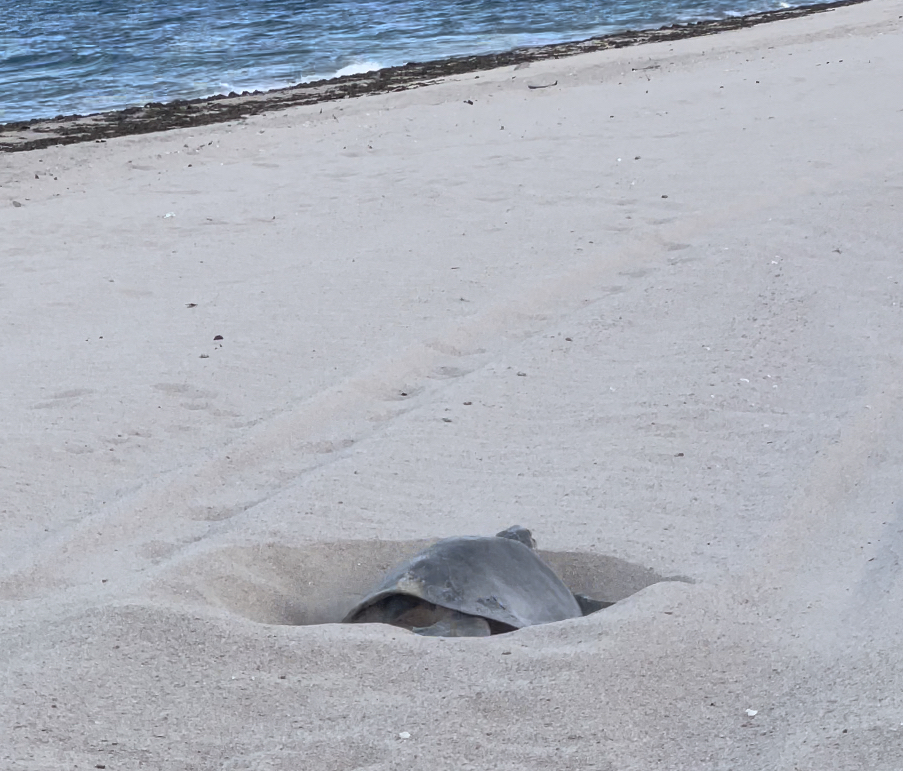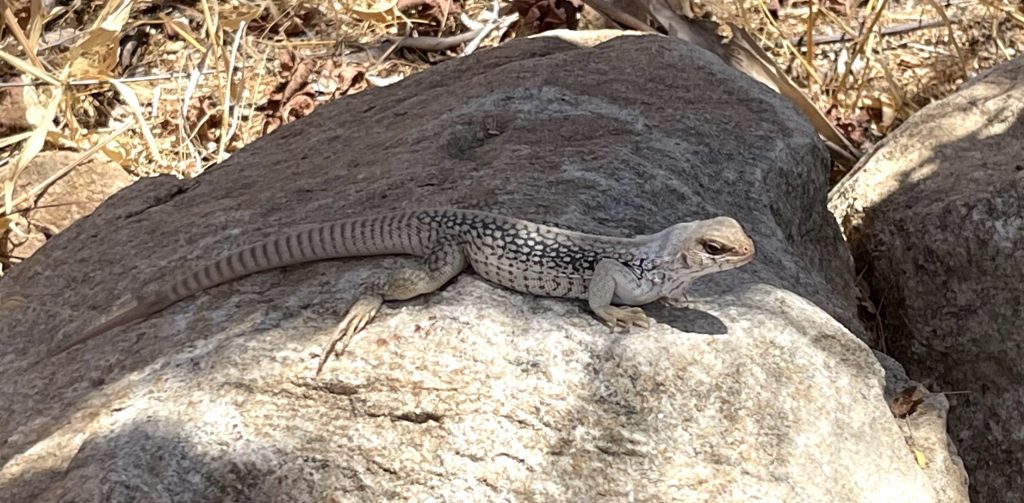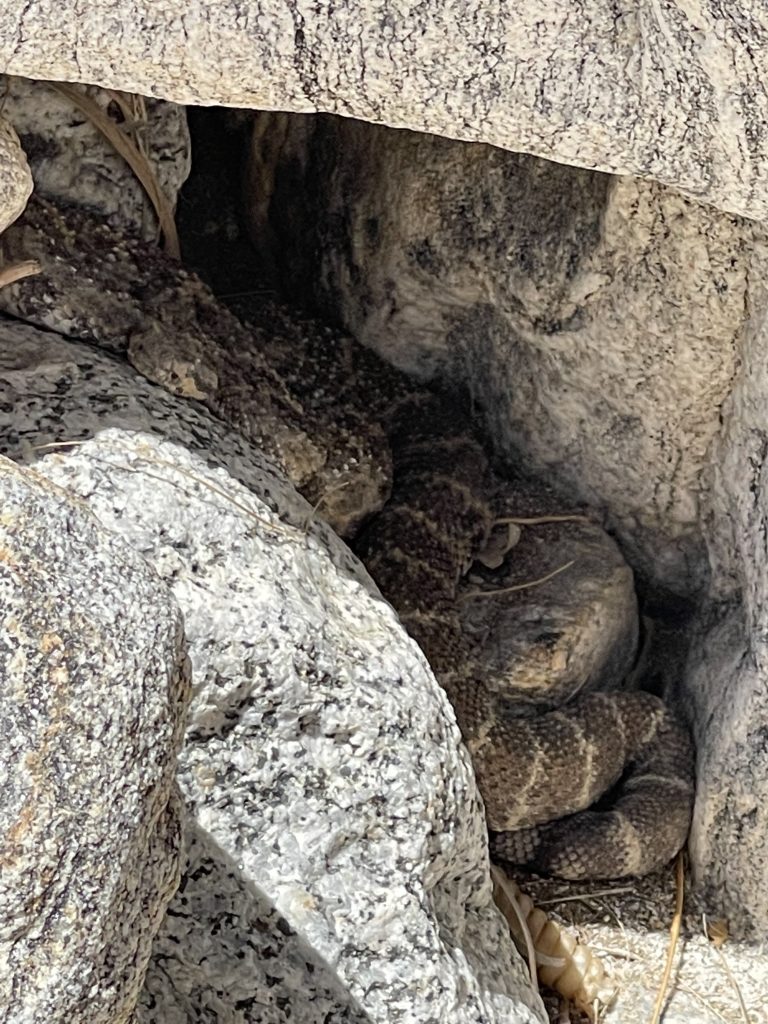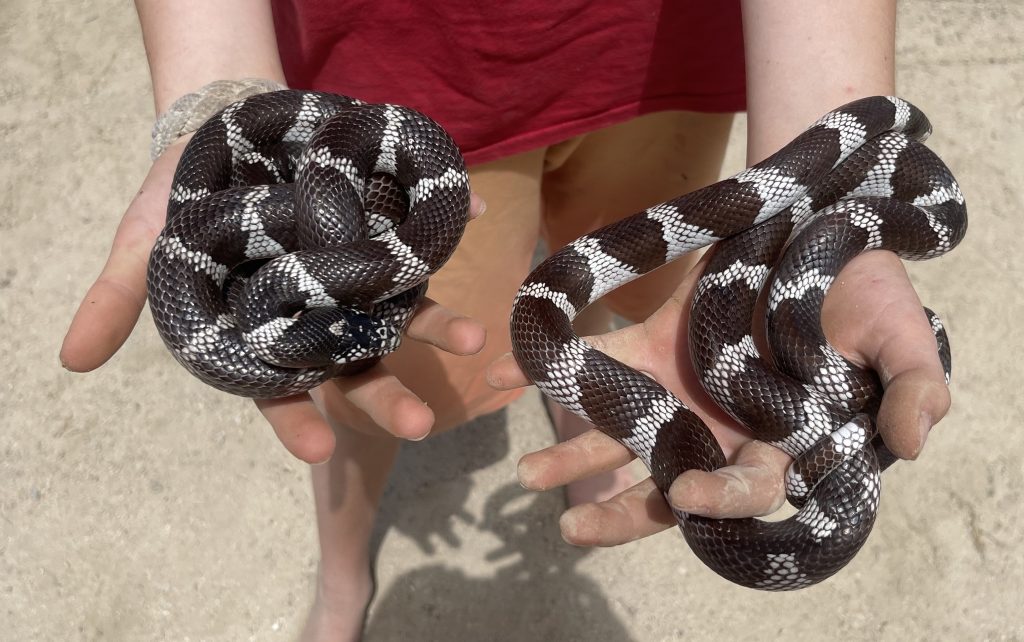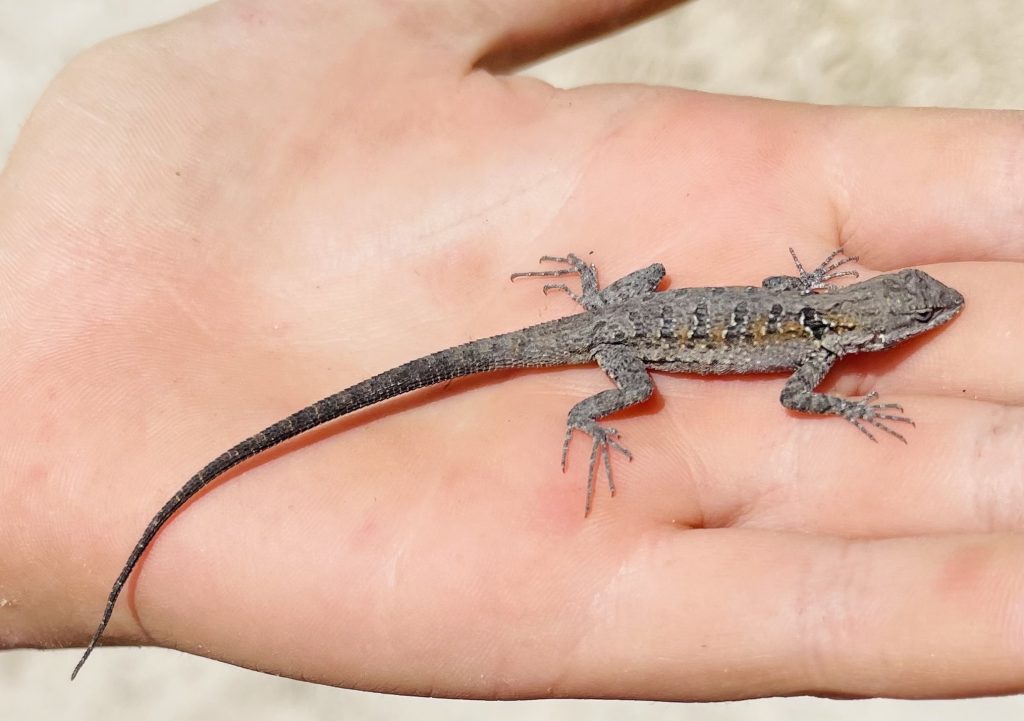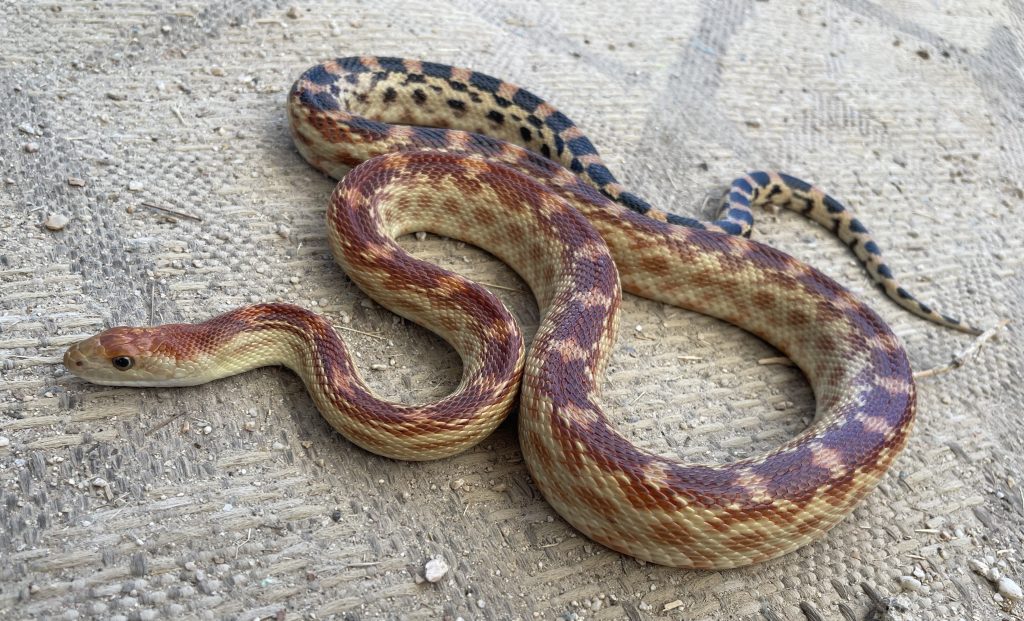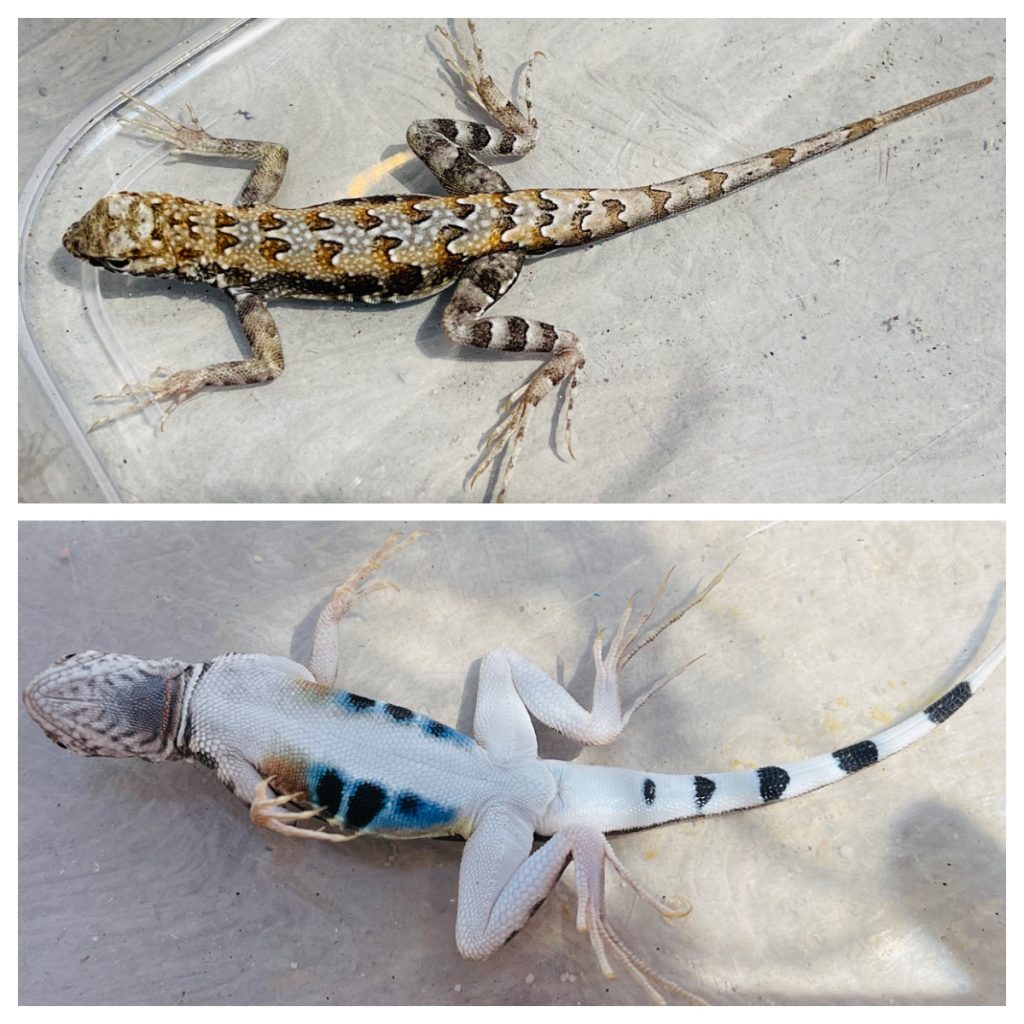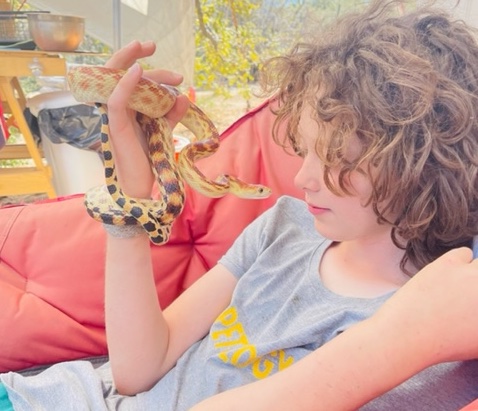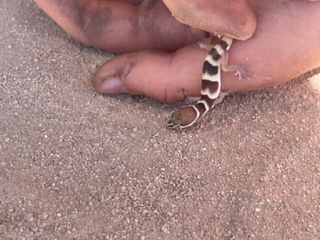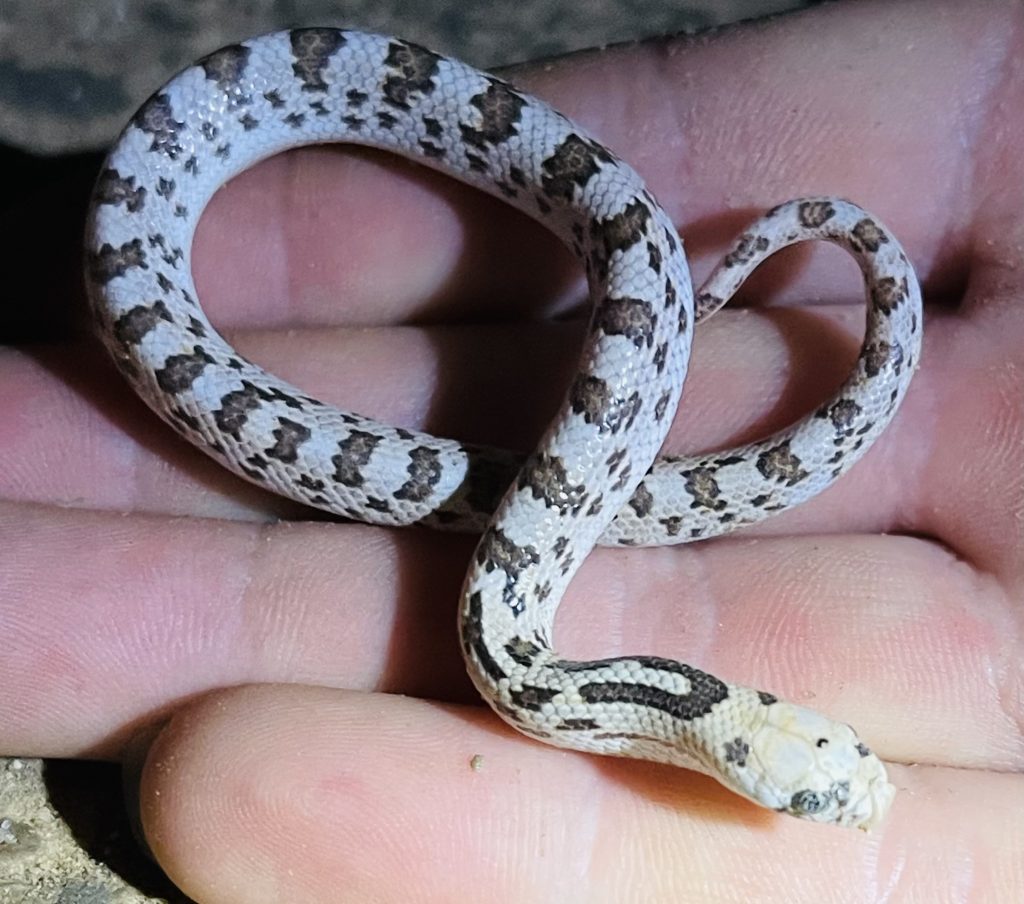
Western Leaf-Nosed Snakes (Phyllorhynchus decurtatus) are interesting, small and harmless snakes that inhabit sand dunes and desert landscapes with creosote bushes. They are strictly nocturnal. These little snakes — and I mean little! 12 to 20 inches (or 30 to 50cm) as adults — are very specialized and have a fascinating diet of mostly lizard eggs; however, they will also eat geckos, other lizards and sometimes bugs.
When I found my first and only leaf-nosed snake so far, a few of my friends and I had been watching the sunset at the Bufador south of town. It was getting dark and my friends headed home, so it was just me and my dad. As we were getting ready to go, I proposed the idea of driving slowly down the road with a spotlight to try to find a nocturnal snake. Begrudgingly, we set off kind of slowly down the road.
After a few minutes —I had seen a few beetles but nothing too interesting — we headed onto a large, wide sandy road and my dad took the opportunity to speed up, saying “There will not be any snakes here.” Well, as luck would have it, there was a juvenile Western Leaf-Nosed Snake right in the middle of the road. I yelled “SNAKE! STOP!!! SNAKE!!!!!” To my horror, we went directly over it.
My dad stopped a little way up the road and I leaped out of the car. Luckily for the snake — and my dad — the snake was fine and had not been hit. Since then, I have gone out to the Bufador at night probably 10 times and have not seen a single other snake, so I guess I just got lucky.
